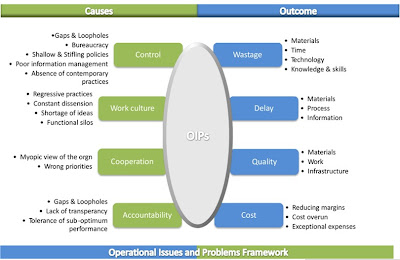A while back I was reading an article in the magazine 'outlook business' that touched on the need to be prudent when it comes monetary policy. When an economy surges ahead it gives some scope to tighten interest rates. But rarely central banks do that as that is seen as anti growth by corporates and even politicians. If tightening the belt makes one sit upright, it will only help in sensible and safe driving. However we do see rate cuts to further fuel growth. When the tide turns it leaves central banks gasping for breath with already low rates. Rates can't go below '0'. Similarly businesses get carried away when times are good and don't look around much for cost cutting opportunities.
Cost cutting and cost reduction may have hardly troubled the corporate minds when the picture was rosy. But today everybody wants to cut costs. Nothing wrong with it just that people turn cost conscious only when pushed to a corner. If companies constantly work on reducing / eliminating unwanted costs, they will find it easier to navigate through rough waters. Unwanted costs present greater opportunity to achieve substantial recurring cost savings. However they also pose greater challenge and prove harder to crack.
Operational issues and problems
Unwanted costs happen due to operational problems and issues (OIPs). They are not something that can be easily and immediately done away with. They (OIPs) require a systemic solution. For a systemic solution we need better understanding and clarity of what they are and where to look at. In this post I am presenting a broader picture of operational issues and problems. It is an attempt to understand various factors that contribute to operational issues and problems and what causes each of these factors to thrive at work. The diagram given below captures two different sides of OIPs. On one side it has 'causes' and on the other side 'outcome' of operational issues and problems. By no means causes listed in the diagram are exclusive. There could also be some that may not find a place on the left side of this diagram but can impact one of the outcomes listed on the right side, directly. Click on the diagram to expand it and give me your feedback and suggestions.

I have broken it down to the next level, for example, expanding 'myopic view of the organisaiton' under 'Cooperation'. Currently going through them to filter and identify high impact causes. It's too huge a picture currently and there are some 128 causes with 39 duplications. In any case we are looking at not less than 89 different causes that when unattended infects and negatively impacts a business with the business virus called OIPs.
I will take up major causes of OIPs and discuss them one by one in future posts.
Link to earlier post on cost reduction
Cost cutting and cost reduction may have hardly troubled the corporate minds when the picture was rosy. But today everybody wants to cut costs. Nothing wrong with it just that people turn cost conscious only when pushed to a corner. If companies constantly work on reducing / eliminating unwanted costs, they will find it easier to navigate through rough waters. Unwanted costs present greater opportunity to achieve substantial recurring cost savings. However they also pose greater challenge and prove harder to crack.
Operational issues and problems
Unwanted costs happen due to operational problems and issues (OIPs). They are not something that can be easily and immediately done away with. They (OIPs) require a systemic solution. For a systemic solution we need better understanding and clarity of what they are and where to look at. In this post I am presenting a broader picture of operational issues and problems. It is an attempt to understand various factors that contribute to operational issues and problems and what causes each of these factors to thrive at work. The diagram given below captures two different sides of OIPs. On one side it has 'causes' and on the other side 'outcome' of operational issues and problems. By no means causes listed in the diagram are exclusive. There could also be some that may not find a place on the left side of this diagram but can impact one of the outcomes listed on the right side, directly. Click on the diagram to expand it and give me your feedback and suggestions.

I have broken it down to the next level, for example, expanding 'myopic view of the organisaiton' under 'Cooperation'. Currently going through them to filter and identify high impact causes. It's too huge a picture currently and there are some 128 causes with 39 duplications. In any case we are looking at not less than 89 different causes that when unattended infects and negatively impacts a business with the business virus called OIPs.
I will take up major causes of OIPs and discuss them one by one in future posts.
Link to earlier post on cost reduction




